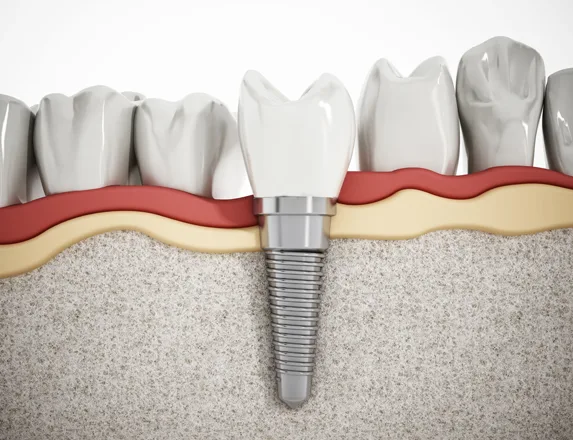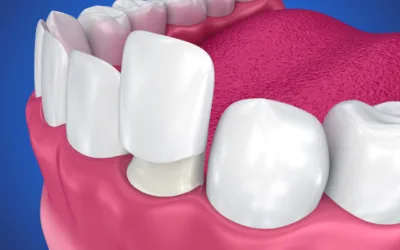Affordable One-piece Dental Implants

New Tech for Better Smiles!
One-piece dental implants are designed as a single unit combining the implant and abutment, streamlining the implant process. They are often chosen for their simplicity and reduced treatment time, making them a practical option for many patients. One-piece implants provide a stable and effective solution, especially for cases with limited vertical space or narrow ridges.
These implants eliminate the microgap found in traditional two-piece designs, reducing potential structural weaknesses. Their smaller size and integrated design often allow for easier insertion and quicker healing. Dentists may recommend them for patients with specific bone conditions or when minimal invasiveness is a priority.
What Are One-Piece Dental Implants?
One-piece dental implants combine the implant body and abutment into a single unit. Their design, material composition, and functional differences from traditional implants make them suitable for specific dental restorations, especially where simplicity and space constraints matter.
Overview of One-Piece Implant Design
One-piece dental implants, also called monobloc implants, integrate the implant body and abutment into one solid piece. The implant body is surgically placed into the jawbone, while the abutment extends above the gum line to support the prosthetic tooth directly.
This unified design allows placement in a single surgical session without needing separate attachment of the abutment. The abutment typically has a fixed shape, limiting flexibility for adjustments after placement.
One-piece implants are preferred in cases with limited bone height or narrow ridge width, and when immediate loading or a streamlined procedure is desired.
Comparison to Traditional Dental Implants
Traditional dental implants mainly consist of two pieces: the implant fixture inserted into the bone and a separate prosthetic abutment connected later. This two-piece design allows for more customization of the abutment shape, angulation, and height after implant integration.
One-piece implants reduce treatment steps since abutment placement occurs simultaneously with implant surgery. They tend to be less invasive and faster but provide less prosthetic flexibility.
However, two-piece implants offer improved esthetic outcomes and adaptability in complex cases because the abutment can be modified or replaced independently. One-piece implants are often used in simpler restorations or narrow spaces where less surgical complexity is preferable.
Materials Used in One-Piece Implants
One-piece implants are primarily made from titanium or zirconia. Titanium is the most common due to its strength, biocompatibility, and proven integration with bone tissue.
Zirconia one-piece implants offer a ceramic option valued for its tooth-like color and resistance to corrosion. These implants tend to promote favorable soft tissue response and natural aesthetics, making them suitable for front teeth replacements.
Both materials are designed to provide durability and stability, but zirconia can be more brittle, limiting its use in high-stress chewing areas. Material choice depends on the individual clinical situation and desired esthetic outcomes.
Benefits of One-Piece Dental Implants
One-piece dental implants offer advantages in surgery, recovery, and appearance. Their design eliminates separate components, streamlining the process and minimizing complications. This approach impacts the patient’s experience from the initial procedure through healing and final results.
Simplified Surgical Procedure
One-piece implants combine the implant and abutment into a single unit, reducing the number of surgical steps. This integration means the implant is placed and immediately prepared for restoration without needing a second surgery.
The surgery is typically less complex because there are fewer parts to handle and fit. This can lower the risk of misalignment between components and reduce potential technical errors during placement.
Surgeons often report shorter operation times with one-piece implants. Fewer appointments and less equipment are required, benefiting both the clinician and patient in terms of efficiency and comfort.
Reduced Healing Time
With the implant and abutment combined, one-piece implants avoid micro-movements between parts that can delay healing. This stability promotes faster osseointegration—the process where the implant bonds with the jawbone.
Patients often experience reduced inflammation and lower rates of peri-implantitis, a gum infection linked to implant failure. The streamlined design also minimizes disturbance of the gum tissue during placement.
Healing can therefore be quicker, allowing restorative procedures to begin sooner. This results in shorter overall treatment time compared to multi-piece implants.
Improved Aesthetics
One-piece implants support better aesthetic outcomes due to their natural shape and tissue integration. The single structure reduces gaps where bacteria and plaque can accumulate, benefiting gum health.
The design allows for more precise positioning of the visible implant portion, making it easier to align with surrounding teeth. This results in a more natural and continuous gum line appearance.
Patients often prefer the ceramic options available in one-piece implants for their color and translucency, which blend well with natural teeth compared to metal implants.

Indications and Suitability

One-piece dental implants are designed for specific clinical needs and patient profiles. Their use depends on factors like bone quality, aesthetic requirements, and procedural simplicity. Suitability is defined by how well a patient’s oral condition aligns with the implant’s design benefits and limitations.
Ideal Candidates
Ideal candidates have sufficient bone volume and density in the implant site. They usually require single-tooth replacements where esthetics and quick healing are priorities.
Patients with good oral hygiene and no active periodontal disease are preferred. Those seeking a minimally invasive procedure with fewer surgical steps benefit from one-piece implants.
Candidates should avoid heavy bruxism or extreme occlusal forces, as these implants have limited prosthetic flexibility compared to two-piece systems.
